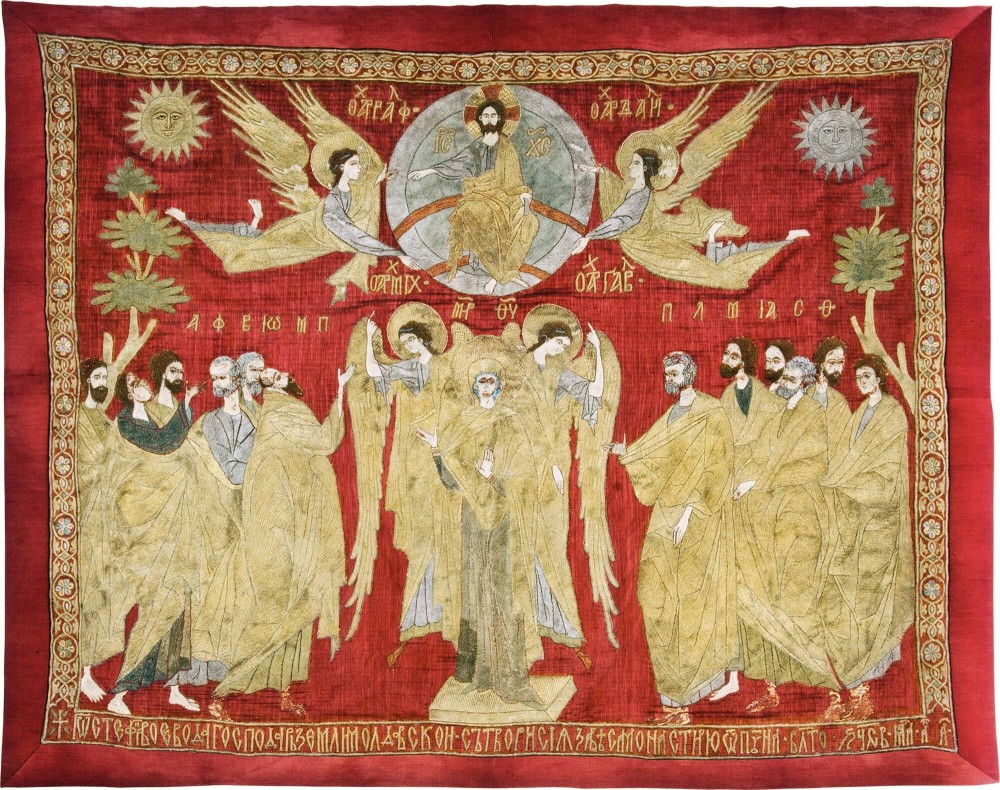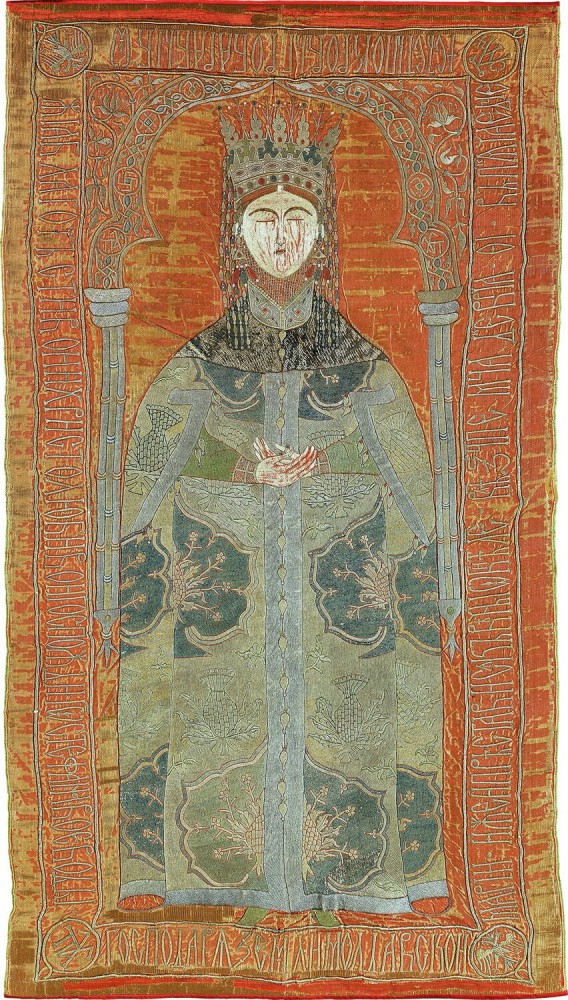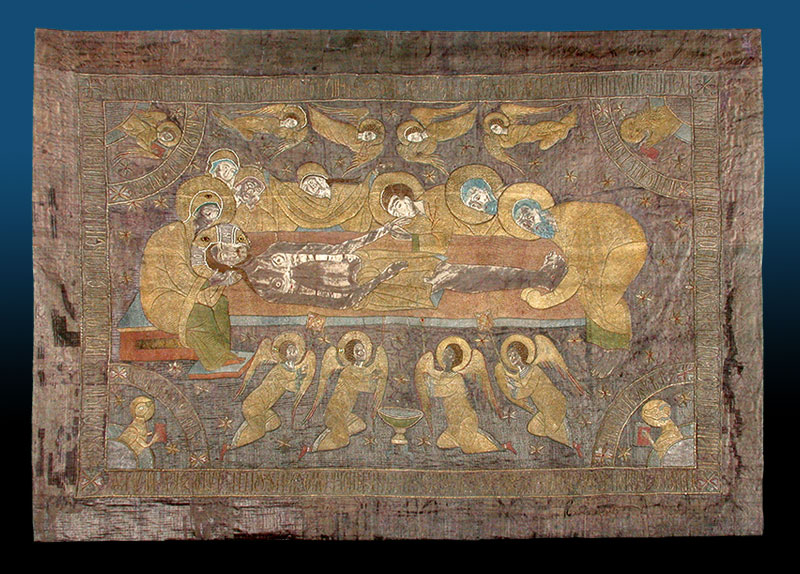Byzantine embroideries from Romania at Louvre Museum, Paris
OthersStarting with the 17th of April, the Louvre Museum will host an exhibition of Byzantine-tradition religious embroidery from Romania. The display is part of the Romania – France Season, an important public and cultural diplomacy event that started last year in France. The exhibition, which can be found in room 505 of the Richelieu wing, will be open from the 17th of April to the 29th of July. It will be a unique occasion to discover the hidden gems of the historical region of Moldavia.

Photo: Ecclesiastical Flag of Stephen the Great - National Art Museum of Bucharest
The masterpiece of the exhibition is an Ecclesiastical Flag of Stephen the Great. The embroidery is also named the “Battle flag of Saint Georges,” depicting Saint Georges the saint worshiped by Stephen the Great.
The monasteries of Mount Athos used to receive different gifts from Romanian voivodes during the Ottoman occupation, as a way to protect Christianity. It was also the case of the flag offered by Stephen the Great of Moldavia to the Zograf monastery 500 years ago. Due to troubled times in history, in the First World War, the flag was recovered by the French Army and given back to Romania in a ceremony held in 1917 at the University of Sorbonne.

Photo: The altar door curtain of Ascension – Putna.ro
Another exhibit to draw the attention of the public is “Dvera Înălțării.” The altar door curtain of Ascension is a canvas embroidered with golden silver yarn dating back to 1484. The curtain depicts the biblical scene of ascension expressed in warm nuances of red and yellow, which are specific to the early Byzantine tradition.

Photo: Maria de Mangop tomb cover – Putna.ro
In Byzantium, the tradition of covering imperial tombs with expensive fabrics was ancient. The Louvre exhibition brings the tomb cover of Maria de Mangop, the second wife of Stefan the Great, a funeral embroidery made in Byzantine technique in 1477. It is said that the voivode fell in love with the daughter of another boyar, which would have rushed Maria de Mangop's death.
Maria de Mangop's tomb cover was not just a work of art; it was designed to embellish the Putna necropolis. The tomb cover contains the embroidered portrait of the defunct, which, according to experts, makes it the most striking example of a giant decorated in Byzantine and post-Byzantine art.

Photo: Epitaph of Gavriil Trotuşan – Putna.ro
In 1516, the treasurer Gavriil Trotusan gifted the epitaph to Voronet Monastery. The epitaph is a liturgical embroidery depicting Jesus Christ dead, sitting on his back. In the Orthodox Church tradition, the epitaph is brought to the procession on Good Friday. It symbolizes Christ’s body's descent from the cross and the preparation for burial. On the Holy Saturday, it is seated on the altar table, where it is kept until Ascension, the altar being assimilated to the tomb of the Savior. In this form, the epitaph appears at the end of the 13th century.
Source:http://putna.ro/Evenimente-s5.php#expozitie-luvru